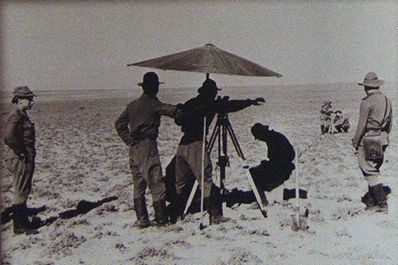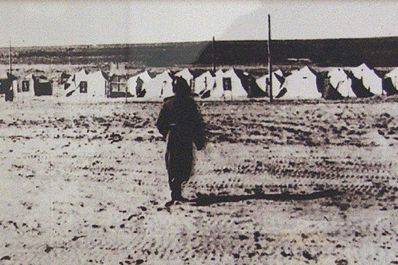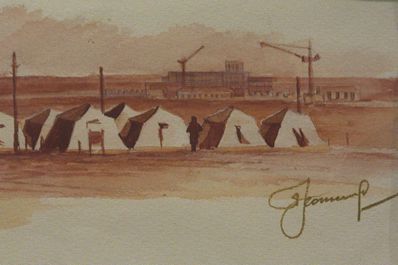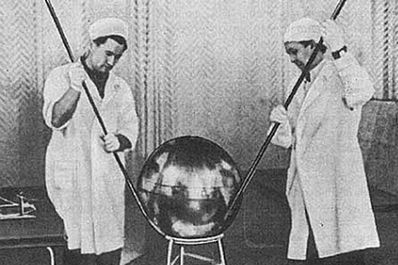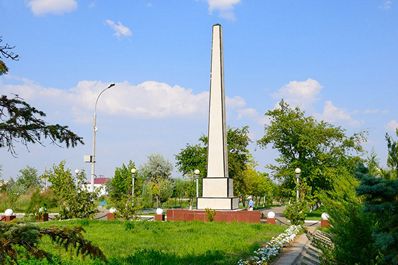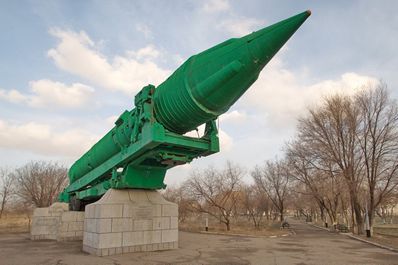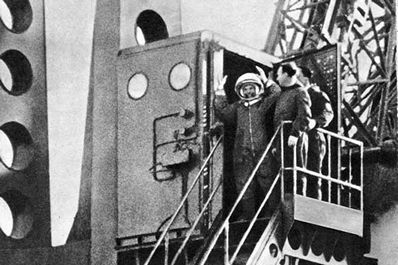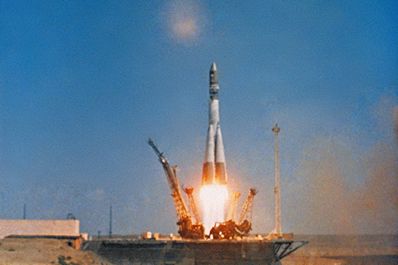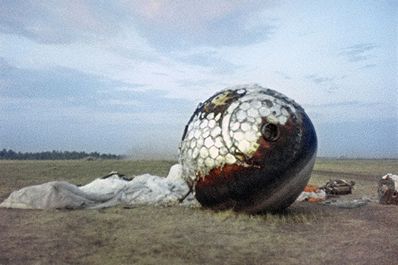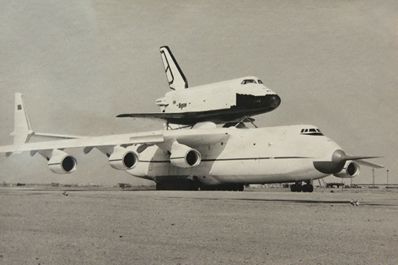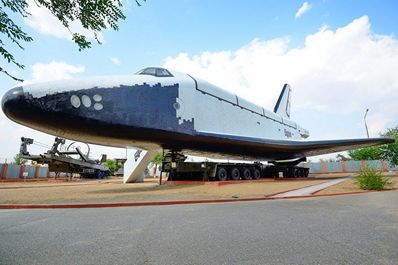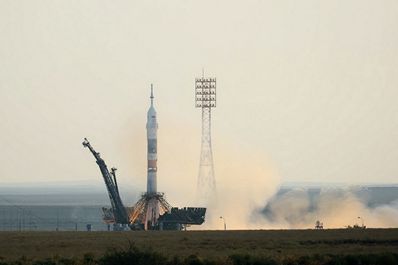History of over half a century old Baikonur started during Soviet times. Today Baikonur continues rocket launches to the space as a part of Russian astronautics. Since the 1950’s there have been more than 1500 space ships and over 100 ballistic rockets launched from Baikonur. The demand of the military in intercontinental ballistic missiles for delivering the nuclear weapon to the potential enemy gave a start to the history of Baikonur. Luckily, today this legendary cosmodrome serves exclusively peaceful purposes.
1950’s
The birth of astronautics in the USSR dates to May 13, 1946, when Stalin signed a decree on building space field of science and industry. The history of Baikonur started in May 1945 when the government of the USSR made a decision on creating an intercontinental ballistic missile where apart from the missile development itself, there was a point on construction of the testing area. Following many researches and compliance of necessary conditions such as availability of railway station, water reserve and less populated region, the steppe region on the shores of Syr-Darya near the village of Tyura-tam was chosen.
On 12 January 1955, the first group of constructors and military officers landed to build a testing area and a settlement. First, they built a tent-camp and the planning works of the future testing area began. On 20 July 1955, the construction of the first launching pad had started, though only few launches were planned for it, however the construction came out that firm and comfortable that it is used until today – currently known as Site No.1 or “Gagarin’s start” and there more than 600 launches have already been done from the site.
1957 was the beginning of the space era. The construction of the testing area was over and on 15 May, they launched the first rocket that was a failure. On 12 July, the second trial also failed. And only with the third try, on 21 August, they managed to successfully launch the intercontinental ballistic missile named R-7. However, the door to the space was opened only on 4 October 1957 when there was the first artificial space satellite launched from Baikonur. It was making rounds around the earth orbit for 3 months and passing a simple radio signal “Beep! Beep!”. Only a month later, on 3 November, the second spacecraft launched to Earth orbit with the animal on board – the dog named Laika.
At the same time, there the settlement for the cosmodrome workers, builders - scientists and military officers, was being developed. The tent camp slowly transformed into clay houses, and later to big wooden houses. Finally, in January 1958, there appeared a village called Leninskiy.
1960’s
The start of the Space Age was not smooth. On October 24, 1960, during testing of the new rocket R-16 at Baikonur space center, unauthorized switch of the engine occurred that destroyed the rocket in an enormous explosion. 74 people died, among them were the workers, military officers and rocket engineers. Three years later, on the same day, on 24 October 1963, another catastrophe took place: due to the evaporation of the fuel components and a short circuit the fire came out that took lives of 8 people. Since then, 24 October is considered a Black Day: they do not launch rockets, and commemorate all those who died during the space exploration.
However, there was a successful event too - on 12 April, 1961, the first man, Yuriy Alekseevich Gagarin, went to space. There are now many monuments to him in different countries of the world. It is interesting that during the launch start, Gagarin was supposed to say according to regulations: “Crew, taking off”, but instead he cheerfully announced “Let’s go!”; now all astronauts say the same.
After the second stunning success, the next milestone in space exploration was flight to the Moon. On 3 August 1964, the USSR approved a moon program, and Baikonur had started construction of the launch pad for the extra-heavy rocket N-1. At the same time, the USA that gave up the first steps in the space race decided to excel the USSR and they made it - on 20 July 1969, the crew of the spacecraft Apollo-11 landed on the Moon. Tests at Baikonur were not successful, and in relation with “space” expenditures on development of extra heavy rocket for Moon flight, the Soviet moon program was literally stopped.
A positive side effect of cosmonautics progress was the development of the village Leninskiy; 4-storey apartments blocks were built, the city infrastructure advanced. In 1969, the village got the status of the city and was renamed to Leninsk.
1970’s
Giving up in the moon race, the USSR continued exploring the space. In the 1970’s, several Moon research vehicles were launched from Baikonur, and research apparats were sent to the Venus and Mars. Still the most significant event was the launch of “Proton-K”, the carrier rocket, on 19 April 1971. It led out the first piloted orbit station “Salyut” to the Earth orbit. Proton-K accepted two expeditions of astronauts and served over half a year. Later, in 1975, spaceship “Soyuz-19” was launched from the Baikonur cosmodrome, that soon docked with the American “Apollo” highlighting the new era of space exploration – peaceful cooperation of space empires. This decade signified the gradual development of space exploration in the history of Baikonur.
1980’s
Baikonur continued working as usual, developing the existing rockets, launching earth orbit satellites, space stations and interplanetary space crafts. However, in 1981, the USA started using Shuttle, a new type of spaceships for delivering cargo and people to the orbit. Soviet secret services had already found out about the development of the new craft in 1975; it triggered a new space race. The Russian rocket producers managed to create such spaceship rather late. Besides, the project was too expensive. Space shuttle “Buran” made its only flight on 15 November 1988, and the program was shut down. On the other hand, thanks to this, Baikonur city had another step of development: new districts were constructed, infrastructure widened; a huge aerodrome built on the cosmodrome for landing of “Buran” still receives aircrafts of any class, express deliveries of large-size spare parts, satellites and other equipment.
The other important part of this epoch in the history of Baikonur was the construction of the permanent orbit station “Mir” that later turned into the first international space station. Mir was visited by the astronauts from the USA, Japan, EU and other countries. It was sent on its course on 20 February 1986; the base module of the “Mir” station was delivered to the orbit by the rocket-carrier “Proton-K” from the Baikonur cosmodrome, followed by six housing and scientific modules. It had been serving on the Earth orbit for 15 years instead of initially planned 5, giving a foundation for building International Space Station (ISS).
1990’s
The last decade of the 20th century was a real test for Baikonur – after the fall of the USSR, the city and the cosmodrome were passed to Kazakhstan, and the entire rocket building industry remained in Russia. During this time, the number of space launches had rapidly decreased. The future of the space center was indefinite. Along with this, due to the legal complications with the definition of the status of the space center, change of administration in the city and decline of the life quality, many specialists started to abandon Baikonur; the population number shrunk twice.
In 1994, Russia and Kazakhstan agreed on the issue of Baikonur: Baikonur complex consisting of the city and the space center was passed back to Russia. In 1995, the city of Leninsk was renamed to Baikonur. Life in the city began to revive; the Ministry of Internal Affairs of Russia started gradual handover of cosmodrome objects to the Roscosmos State Corportation. Thus, Baikonur successfully overcame the crisis, slowly regained its power and even started the new stage of development.
The most important milestone of this period was the launch of the rocket-carrier “Proton-K” with the functional cargo block “Zarya” from Baikonur. The launch took place on 20 November, 1998, and is celebrated as the birthday of ISS, as “Zarya” was the first module of the future orbit station.
Thus Baikonur, once built for military purposes, now serves exclusively for peaceful purposes and united efforts of many countries of the world.
21st century
The present Baikonur preserves stability. Baikonur space center regularly launches satellites, manned and unmanned cargo crafts to the ISS. In 2004, Russia and Kazakhstan signed a new agreement to extend space center rent until 2050.
The most recent significant event in the history of Baikonur was on January 27, 2016, when the press-service of the Roscosmos announced that more than 40 touristic companies are eligible to organize tours to Baikonur. Now once secret object can be visited by anyone. It is to note, that Advantour travel agency is also included in the list.


